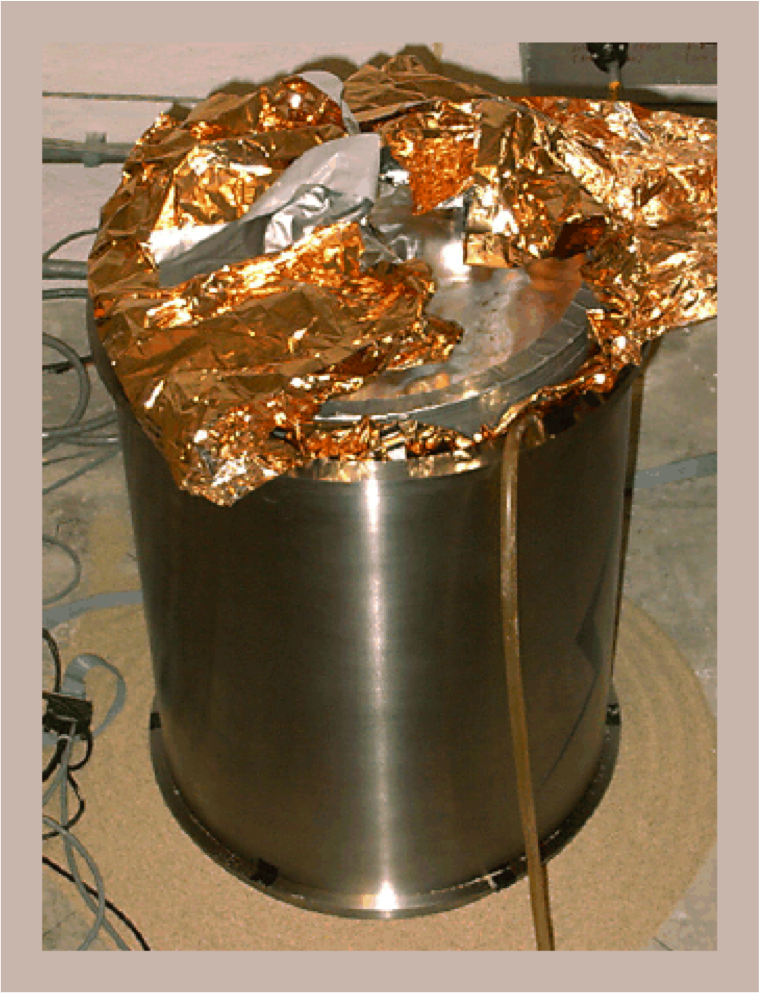MOBB 2002 Installation
Initial Deployment as an Autonomous System

The successful MOBB deployment took place April 9-11, 2002, and the station recorded data autonomously ever since (e.g. Romanowicz et al., 2003).
All installations were done using the MBARI ship Point Lobos and the ROV Ventana. Prior to the instrumentation deployment, the MBARI team manufactured and deployed a 1181 kg galvanized steel trawl-resistant bottom mount to house the recording and power systems, and installed a 53 cm diameter by 61 cm deep cylindrical PVC caisson to house the seismometer pressure vessel (Figure 2.1). The bottom mount for the recording system was placed about 11m away from the caisson to allow the future exchange of the recording and battery package without disturbing the seismometer. This mount was designed so as to protect this package from trawling and other sources of damage (Figure 2.2). Prior to deployment, the seismometer package was tested extensively at BSL, then brought to MBARI where its internal clock drift was calibrated in the cold room against GPS time.
The actual deployment (04/09/02-04/11/02) occurred over 3 days using the ship Point Lobos and the ROV Ventana (Figure 2.3). On the first dive, the PVC caisson was evacuated (Figure 2.4) and the seismometer package was lowered into it (Figure 2.4, 2.5, 2.6), and its connection cable brought to the site of the recording unit. Tiny (0.8 mm) glass beads were poured into the caisson until the seismometer was completely covered, to further isolate it from water circulation (Figure 2.7, 2.8, 2.9).On the second dive, the recording package was emplaced in its trawl-resistant mount, and connected to the seismometer package (Figure 2.10). The seismometer package is now buried at least 10 cm under the seafloor level. On the third dive, the ROV buried the cable between the seismometer and recording packages, then connected to the seismometer through the recording system (Figures 2.11, 12, 13,14), levelled and recentered the seismometer and verified that it was operational. The current-meter was also installed and connected to the recording system.
On April 22nd, the ROV returned to the MOBB site to check the functioning of the seismometer and recording system. Some slight settling of the seismometer pressure vessel had occurred, and so the seismometer was commanded to recenter electronically. Over 3 MB of data were then downloaded from the recording system over a period of about two and a half hours, including the recordings of two regional earthquakes in California and two teleseismic events that occurred in Guerrero, Mexico and in Northern Chile.
Between 2002 and 2009, 25 "dives" involving the MBARI ship "Point Lobos" and ROV "Ventana" took place, to exchange data loggers and battery packages during the time period 04/10/02 to 06/30/08. In February 2004, the N/S component seismometer failed. It was temporarily replaced, from 05/19/04 to 07/09/04, by one of the Keck seismometer packages which was conveniently available at that time. The original seismometer was sent back to Guralp Systems Ltd. for repair and successfully reinstalled on 07/09/04.